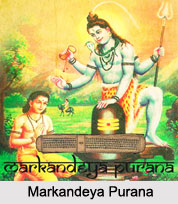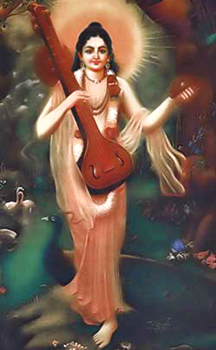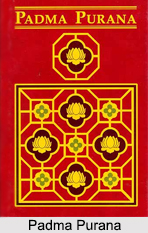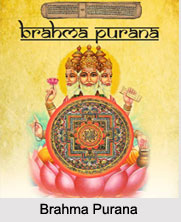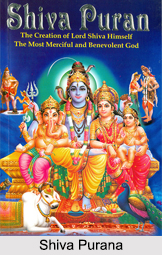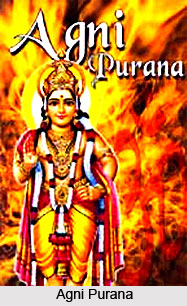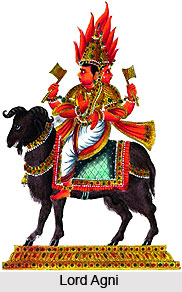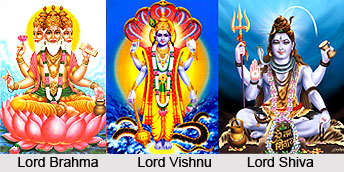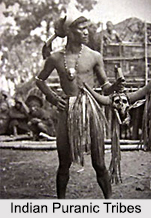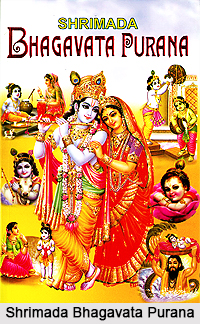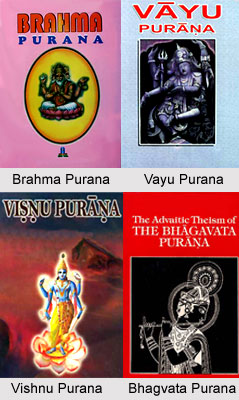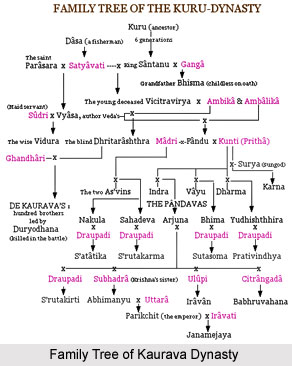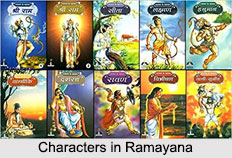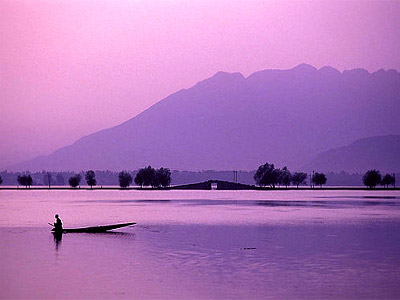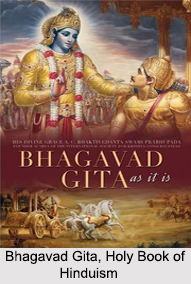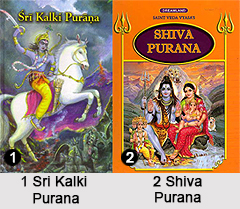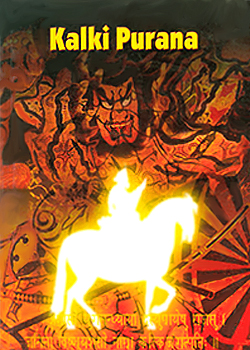 Agni Purana has described the Nadi Chakra which is basically describes the system of veins, nerves and arteries which are to be found in a human body. It has been said that a knowledge of all these leads to a knowledge of the divine self of Hari. In the human body the ten principal nerves are the Ida, the Pingala, the Sushumna, the Gandhari, the Hastijihva, the Pritha, the Yasha, the Alambusha, the Huhu, and the Shankhini. These ten nerves carry the mysterious vital energy known as the Prana. The ten vital winds (nervous energy) are the Prana, the Apana, the Samsna, the Udaha, the Vyana, the Naga, the Kurma, the Krikara, the Devadatta and the Dhananjaya. The vital wind called the Prana is the lord of the other nine.
Agni Purana has described the Nadi Chakra which is basically describes the system of veins, nerves and arteries which are to be found in a human body. It has been said that a knowledge of all these leads to a knowledge of the divine self of Hari. In the human body the ten principal nerves are the Ida, the Pingala, the Sushumna, the Gandhari, the Hastijihva, the Pritha, the Yasha, the Alambusha, the Huhu, and the Shankhini. These ten nerves carry the mysterious vital energy known as the Prana. The ten vital winds (nervous energy) are the Prana, the Apana, the Samsna, the Udaha, the Vyana, the Naga, the Kurma, the Krikara, the Devadatta and the Dhananjaya. The vital wind called the Prana is the lord of the other nine.
It has been mentioned in the Purana that it is the Prana (wind) that being- located in the heart of creatures inflates their lungs and thus gives rise to the process of respiration so essential to vitality. Since it escapes from the body (Prayanam Kurute) after short a span of stipulated time, it is called the Prana. The Apana wind forces down the food and drink into the stomach of an animal. The wind Samana is so called from the fact of its establishing equilibrium among the different principles of blood, bile and phlegm, generated by eating, drinking, smelling, etc. The wind known as the Udana, controls the movements of lips, facial muscles, the colouring of the conjunctivitis and the up-heaving of the heart. The action of the Vyana wind is most apparent in aching of the limbs or in the curvature of the body and the choking of the larynx. A disease is usually ushered in by a deranged state of this nervous energy (Vyana). The action of the Kurma wind is to control the opening, shutting and movements of the eyes that of the Krikara are to help the process of masticulation that of Devadatta is manifest in yawning, while the wind known as the Dhananjaya fattens the system and arrests the shrinking of the body even after death. Since vitality flows or escapes through the channels of these ten veins and arteries they are called Nadis.
Agni Purana narrates that all the conditions, movements and situations of the sun such as the Sankranti, Vishuva, the succession of day and night, changes of tropics, Adhimasha, Rina, Dhana and Unaratra, are by analogy attributed to the different portions and organic functions of the body. The right side of the human body is called the north, and the left the south. The Vishuvas or the equinox points are situated on the line passing through the middle of the body, while the Sankranti in the present instance is the passing over of the psychic principle from one occult nerve ganglion to the other. The occult nerve known as the Sushumna runs through the middle of the body. It has been said that the occult nerve Ida is situate at its left, while the nerve Pingala lies at its right. The Prana or the vital principle situate higher up is called the day, while the wind Apana is called the night. Thus the one and the same vital wind (energy) serves ten different purposes like the sun who controls the succession of day and night and the happening of such phenomena (ten in all) as the Sankranti, the march of the equinoxes, Una-Ratra, Adhimasa, etc subjugation of the bodily principles is called the eclipse of the moon, while a comprehension of the principle which lies beyond the material plane, are called the eclipse of the sun in the parlance of the Yoga.
The Fire God in the great Purana states that an act of Pranayama consists in inflating the abdomen by taking in as much breath as possible, while in its Kumbhaka form, the Yogi should hold tight all the air passages of his body so as to guard against its least escape, and hold his Prana smooth and unruffled like the water in a pitcher resting on its cushion. The Yogi, who is well versed in the Mantras, should let out the whole wind by a single act of respiration, after having attempted to push it upward to the region of the brain.
Finally the adhyaya on Agni Purana ends saying that the man who can shut the door of his heart against the external world and merges his whole soul, and identity in this recitation of the Ajapa does not experience a second birth. At the same time the Nada Mantra, the Omkar Mantra and the Gayatri Mantra are the ones which an individual should fully know in order to redeem himself from the cycles of birth.

